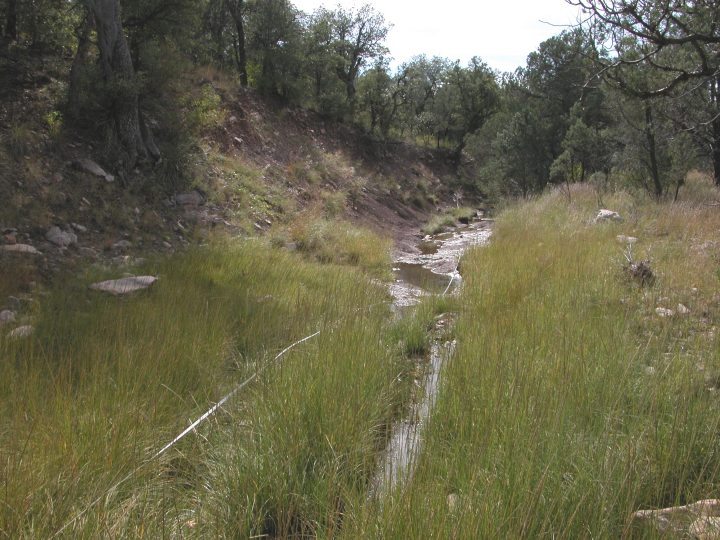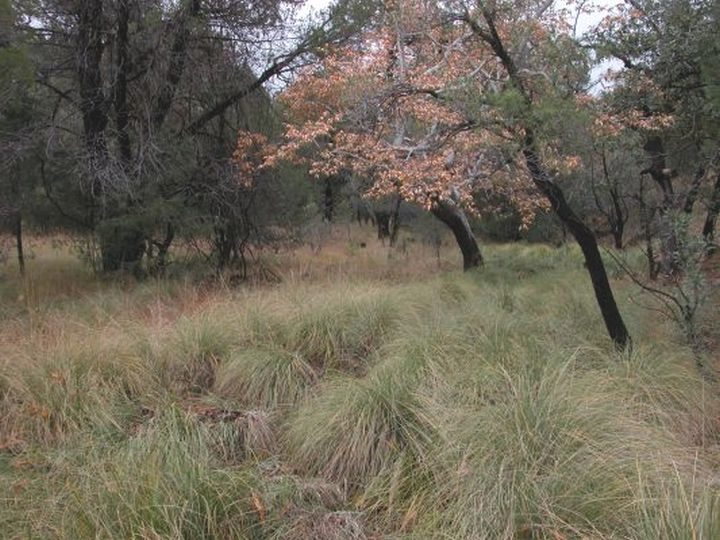Scotia Canyon
Scotia Fence Project
Scotia Canyon, Huachuca Mountains
Cochise County, Arizona
2004 to Present
What: With a grant from the National Wild Turkey Federation, a 540-acre section of Scotia was fenced to better control livestock use of perennially wet portions of Scotia Canyon in the Huachuca Mountains, Cochise County.
When: Beginning 2004 and Continuing
Where: Scotia Canyon approximately 2 miles east of Parker Canyon Lake
General Information: Along with nearby Sunnyside and Parker Canyons and Garden Canyon on the opposite side of mountain Scotia Canyon represents a core habitat area for Gould’s Turkeys in the Huachuca Mountains. The core habitat components include perennial water, associated riparian plants and dependent insects, roost sites, and upland feeding areas.
The bottom of Scotia Canyon is attractive to livestock as well. To better control livestock use on the riparian corridor, approximately 3 miles of 4-strand wire fence were built or replaced around a 540-acre portion of the canyon. Additionally, a cattle guard was installed for continued access by Forest recreationists including hunters. Once riparian conditions are improved, the fenced area would be incorporated into the Lone Mountain Grazing Allotment as a new pasture.
The National Wild Turkey Federation provided almost $7,000 for materials. The Coronado National Forest matched the grant with contract administration of the fencing and purchase and installation of the cattle guard.
The project was completed in 2004.
Acknowledgements: The National Wild Turkey Federation, Lone Mountain Allotment permittee, Coronado National Forest, and Arizona Game and Fish Department
Image Descriptions: The following images show the location and sites in the bottom of the Scotia Fence within the fence.
When: Beginning 2004 and Continuing
Where: Scotia Canyon approximately 2 miles east of Parker Canyon Lake
General Information: Along with nearby Sunnyside and Parker Canyons and Garden Canyon on the opposite side of mountain Scotia Canyon represents a core habitat area for Gould’s Turkeys in the Huachuca Mountains. The core habitat components include perennial water, associated riparian plants and dependent insects, roost sites, and upland feeding areas.
The bottom of Scotia Canyon is attractive to livestock as well. To better control livestock use on the riparian corridor, approximately 3 miles of 4-strand wire fence were built or replaced around a 540-acre portion of the canyon. Additionally, a cattle guard was installed for continued access by Forest recreationists including hunters. Once riparian conditions are improved, the fenced area would be incorporated into the Lone Mountain Grazing Allotment as a new pasture.
The National Wild Turkey Federation provided almost $7,000 for materials. The Coronado National Forest matched the grant with contract administration of the fencing and purchase and installation of the cattle guard.
The project was completed in 2004.
Acknowledgements: The National Wild Turkey Federation, Lone Mountain Allotment permittee, Coronado National Forest, and Arizona Game and Fish Department
Image Descriptions: The following images show the location and sites in the bottom of the Scotia Fence within the fence.

